
10.08.2015
A dialogue with Puerto Rican artist Beatriz Santiago Muñoz on her recent projects that focused on post-military spaces, the political history of Puerto Rican flora and the circulation and mutability of objects in syncretic religions in the Caribbean.
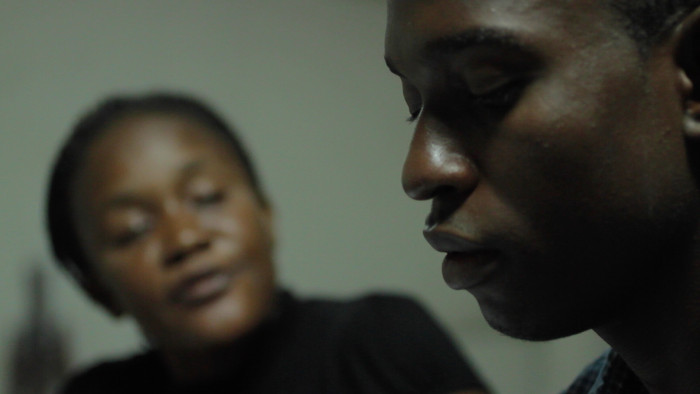
Catalina Lozano: I don’t think shock is a path to approaching your work. When I look at it, I feel there is something there that has been quite digested; form and content need one another because they have “grown up” together. The medium you work in and its narrative structures do not reflect a state of disruption and yet they often visit and revisit states of exception—“normativized” places that sometimes stopped being such (say, military bases or jails) through the transformation of the space itself or the subjects that inhabited or inhabit them. Do you think this notion of shock can in some way dialogue with your way of seeing Caribbean history and your artistic practice?
Beatriz Santiago Muñoz: I think of the shock doctrine (as Naomi Klein spoke of it) as a pressure mechanism but not an end in itself.
Recently I’ve been reading Saskia Sassen’s texts, particularly Expulsions (2015), where she analyzes advanced capitalism’s movements as well as its expulsions and exclusions—from the economy, life, everything—as one of its structural aspects. Refugee crises, suicides as a result of austerity policies and the prison industry are all systems that emerge from systematic capital movements.
My work doesn’t start out from economic analysis; it’s intuitive, with a poetic logic of sensory and material observation. But I’m interested in the relationship between forms, what the senses perceive, material traces, constructions and landscape. Everything words cannot describe. Notably, political and economic systems are usually described in more abstract, numerical and systematic ways, or by using theoretical language.
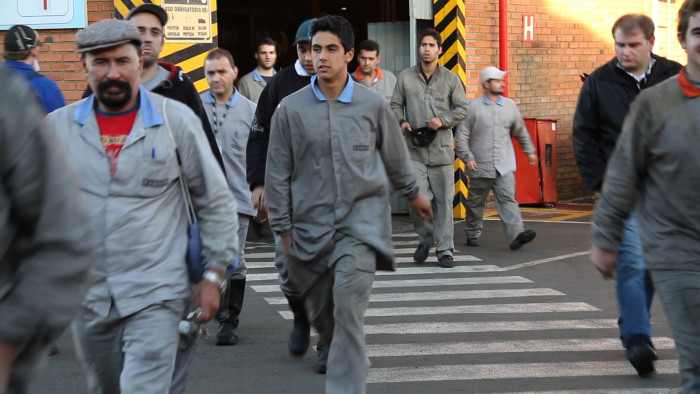
CL: One case from your work where those observations are quite visible is Folc-Industrial (2011) in which you take up a motif from the Lumière brothers’ Workers Leaving the Factory (c. 1895). Harun Farocki used that scene in 1995 to write about the cinematic representation of workers leaving factories, noting that “an image, like an expression so often used that can be understood blindly and does not have to be seen.(1)” The implications of these workers leaving the factory have changed historically to the degree that work has been increasingly normativized in life.
BSM: Footage from Folc-Industrial, a project commissioned for the 2011 Mercosul Biennial, describes a factory exit in Caxias do Sul, Brazil. It is a factory named Randon that manufactures trucks, starting with their metals’ founding and up to the last detail. The factory is like a city that never sleeps, with three eight-hour shifts. In fact, the factory does not really ever definitively let out. Everyone who lives in Caxias do Sul—grandparents, fathers, mothers, brothers—has some sort of relationship with the factory: they’ve all worked, will work or resist working there. The images describe the factory’s form—the form it takes in time, how it regiments space. When its workers come out, they aren’t on a sidewalk or common, free area where they might speak, organize themselves or meet as fellow workers. They proceed directly to private buses the factory itself operates, which take the exhausted workers to their homes. This is a subtle change, but it’s important when seen in light of the initial representation of the workday moment the Lumière brothers made more than a century ago. This is a formal, material and sensorial transformation that has real political consequences and consequences for subject-formation.
CL: In his essay, Farocki makes constant reference to the relationship between the factory and prisons or correctional facilities; between work and fascist discipline. These are normativized spaces that have to do with a way of organizing life under capitalism, with containing resistance. When thinking of your Prisoner’s Cinema project (2013), which was about artist Elizam Escobar, do you think the artist’s diary (or anti-diary) in the jail is a form of poetic resistance to this bio-political order?
BSM: Elizam Escobar was imprisoned for political reasons during nineteen and ahalf years. I began the project by asking him about prison spaces. Subjectivity-creation, thought processes, hyper-sensorial attention to every aspect of prison struck me as exceptional states. One day in the middle of a conversation, he cut me off and said prison is not so much about controlling space as it is about controlling time. All time there is taken up: there’s roll-call, then some pointless work, movement from some place to another, another roll-call. All this is also a way of taking up thought and reorganizing it. Beside the fact someone else structures it, it is just as uncertain and arbitrary. Visitors come and maybe you see them, or maybe you don’t, they move you to another prison with no notice, tomorrow they take away your “privileges” and you don’t always know why. The words heard in Prisoner’s Cinema are a diary of the relationship between place, prison time and thought.
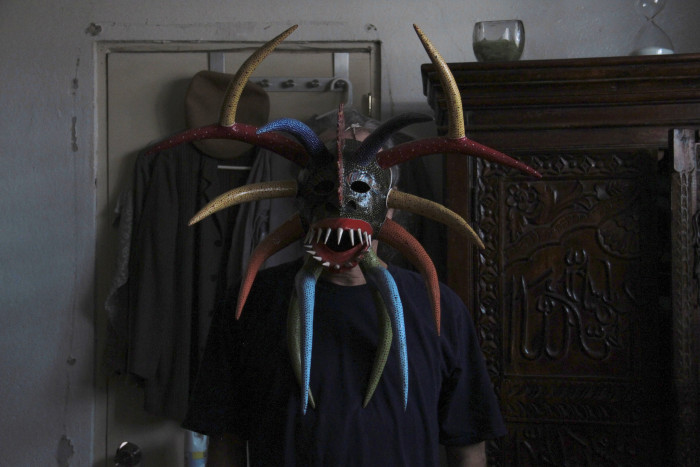
CL: With regard to the observation of material and sensorial traces and the history you spoke of earlier, I’m particularly interested in going deeper when it comes to Haiti, whose population is unequivocally marked as “the damned of the earth,” and where you did Nocturne (2015) (2). Five years ago Haiti suffered a massive natural disaster, but it’s a case in which I’m not certain to what end shock could work as related to advances in neo-liberal capitalism; maybe you have a clearer idea or opinion about how the entire aid apparatus can also become part of the problem… Precariousness became even more acute; mystic thinking inevitably takes on the calamity and integrates it as part of its necessary mediation between the material and invisible forces. My question invites thought on how change is absorbed.
BSM: Amy Wilentz, an American writer who lived in Haiti for quite some time, recently published a book entitled Farewell, Fred Voodoo… (2013). With regard to aid the international community offered Haiti following the earthquake, Wilentz has blogged that “the $14 billion pledged has never entirely materialized. About 50 percent was disbursed. Of the humanitarian aid, according to a 2013 piece in The Guardian, about 94% went to ‘the donors’ own civilian and military entities, UN agencies, international NGOs, and private contractors.’ In addition, ‘36% of recovery grants also went to international [groups].’”(3)
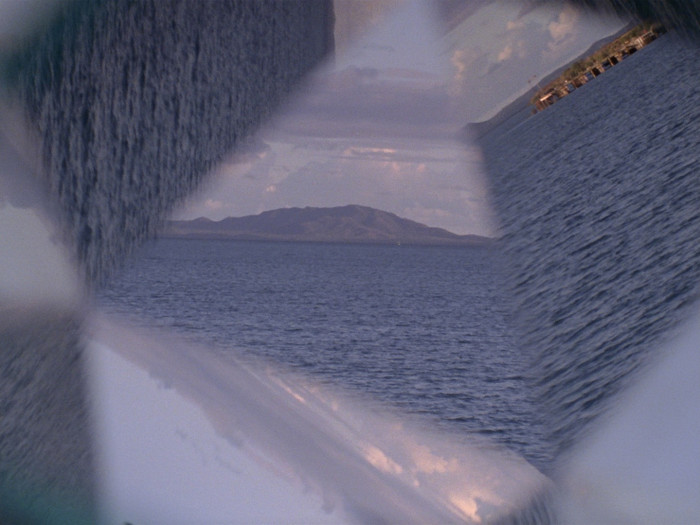
Wilentz describes the how crisis becomes an industry and how a large part of development funds went to putting up hotels and bringing businesses to parts of Haiti the earthquake hadn’t even affected (4).
Far below all this structure—which begins with algorithms between banking offices and investors—lies life on the ground: the material and sensorial reality that is the product of these economic movements. Here you clearly see all the effects that the First World sweeps under the rug via mass overseas goods shipments. A whole universe of castoffs and rubbish—everything from Nokia cell phones from three seasons past to all those tee shirts with logos and slogans from churches, NGOs and American universities—ends up in Haiti. Those who are excluded from the global economy, punished a thousand times over, receive and transform this useless bulk of goods to hold on to what may be of use. Resistance to this logic exists at the level of transforming one thing into another by means of poetic will, mystic thinking, maybe trance. I don’t propose such a reality as an effective resistance practice, but I do propose it as an archive of ways of thinking and living, of irrational thought that allows for big leaps forward.
Recently when I was in Haiti, for just ten days, I got a clearer idea on the relationship between dreams, mystic thinking and the political and economic processes that, in other places, take on a patina of rationality even as they are not rational. They aren’t anywhere, but in Haiti it becomes obvious—Haiti is a nation of the excluded, of humans whom the system has punished in a brutal fashion. In Haiti there are two ubiquitous businesses: hairdressing and the lottery. In Haiti, the lottery is no irrational game; it is the most reasonable and likely option for getting out of immediate, catastrophic poverty.
My work always emerges from a period of observation. I try to go back and unite poetic thinking, form, the material and the sensorial with political and economic processes. What I really think is that they’re always connected: to participate in an economic system that excludes cruelly and brutally, and that transforms everything into possible profit, alongside algorithms that create new markets based on loss forecasts… This is a paralysis of mystic-poetic thinking that’s stranger than any Haitian vodoo.
CL: The Puerto Rican context—which is so different—evinces forms of economic, military and ecological exploitation that are very present in your work but that appear through their material traces, often reabsorbed into nature or re-appropriated for alternate uses.
BS: In Puerto Rico, just like in Greece and Spain, where debt has been devaluated, so-called “vulture capitalism” funds have swooped in immediately to buy, to speculate, and are now the debt’s majority owners. But this is not an end in itself. The goal is the control gained over a country when you are the creditor. It is a pressure mechanism. Frequently, as is the case in Puerto Rico, these are weak governments representing local oligarchies and they are willing to hand over public or commonly held goods, workers’ rights, etc., in exchange for more financing. But that something is passed from the local oligarchy to foreign investors doesn’t make much of a difference to most Puerto Ricans living below the poverty line, who have very little access to any investment whatsoever. Since the twentieth century, these people have been building informal economies greatly linked to drug trafficking, as armed capitalists with their own law and transportation systems. Maybe that’s a lesson for everyone. How can we create systems that are communitarian and cooperative, in parallel to publicly held goods?
The principles undergirding these systems of indebtedness, pressure and privatization are not in the least bit rational. They operate as an anti-poetics of order and profit that turns life itself into an exchange token. In Puerto Rico all this is connected to another crisis, brought on by climate change. Drought is gravely affecting small-scale, fledgling efforts at local organic agriculture, yet high-end resort tourism keeps chowing down on Alaskan salmon as it were nothing. The local fishing industry has been spoiled by pollution from sixty years of US Navy bombardments, despite the fact that polluted testing ranges are now labeled as “natural reserves” to visitors. Straying from the predetermined path is not recommended as it might turn up this or that unexploded bomb.
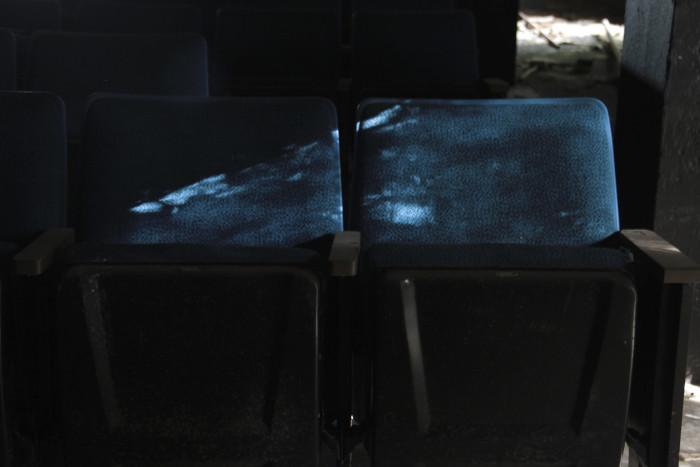
Otros usos, Post-military Cinema, and Ojos para mis enemigos (2014), were all filmed on the grounds of the former US naval base at Roosevelt Roads. All the images we have of the place are taken from the drone’s visual-military realm, the bird’s eye view, the image of domination over a monumental territorial extension. To once more imagine that territory, perhaps we should resist these visual forms, break with the camera’s logic of rationality and bring things down to human scale (or the scale of the invasive iguana species!), reduce the field, fold it in and propose another way of seeing and understanding this place. No longer as the ruins of a sixty-year history of military occupation, nor mass sugarcane cultivation, but as monstrous nature, ten years down the path of becoming wilderness again. But now it’s an uncontrolled forest, where the cotton grows too high to be of any mass economic use, where packs of dogs hunt iguanas and the almond trees and honeybees are taking over the old movie theater, creating a whole new kind of cinema inside.
CL: In La cabeza mató a todos (2014) I’m interested in the idea that labor returns to your practice, but this time in order to subvert the militarized capitalist order through efforts using forces that are not normally considered effective in the West.
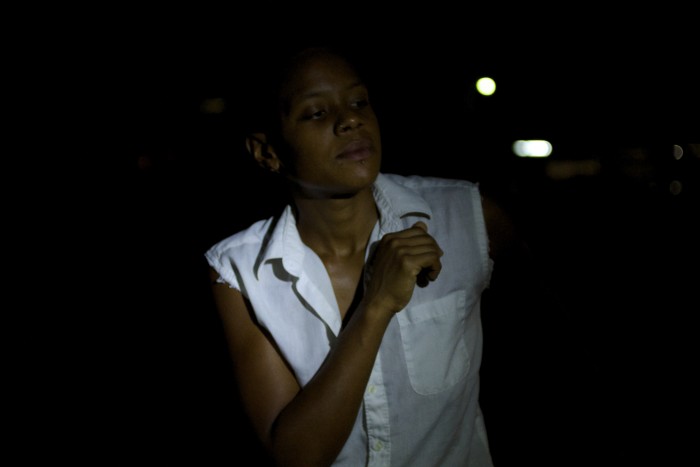
BS: La cabeza mató a todos imagines a spell that destroys military industries. How to resist military occupation, radar or an anti-immigration coast guard? Spells use the power of the word, the so-called “magic package” (5) and thought, to arm and destroy. This isn’t so strange. Nike tennis shoes work in the same way. Nikes… are one of mass global culture’s “magic packages;” for many they act beyond the feet’s physical limits and would seem to have transcendental powers. I’m interested in creating another kind of magic package—images, poetics, ways of seeing and thinking—that can confront all these economic and political systems on a poetic, rather than rational plane.
Notas:
(1) Harun Farocki, Arbeiter verlassen die Fabrik (1995), black and white and video color, 36’.
(2) See Beatriz Santiago Muñoz, “Tout Bagay”, in Catalina Lozano (editora) Lo que no sirve se olvida, Burdeos, CAPC, 2015.
(3) http://amywilentz.com/four-years-after/ Visited on August 4, 2015.
(4) In this propublica coverage, it is explained how the NGO that gathered the largest amount of funds to “Help Haiti” wasted a big part of that money on their administrative expenses and institutional problems. https://www.propublica.org/article/how-the-red-cross-raised-half-a-billion-dollars-for-haiti-and-built-6-homes Visited on Agosto 4, 2015.
(5) In reference to the paké (in Haitian creole) or “package”, an assemblage of materials and object tied together with a piece of fabric that contains and transmits the cosmic energy, in the practice of voodoo.
Comments
There are no coments available.